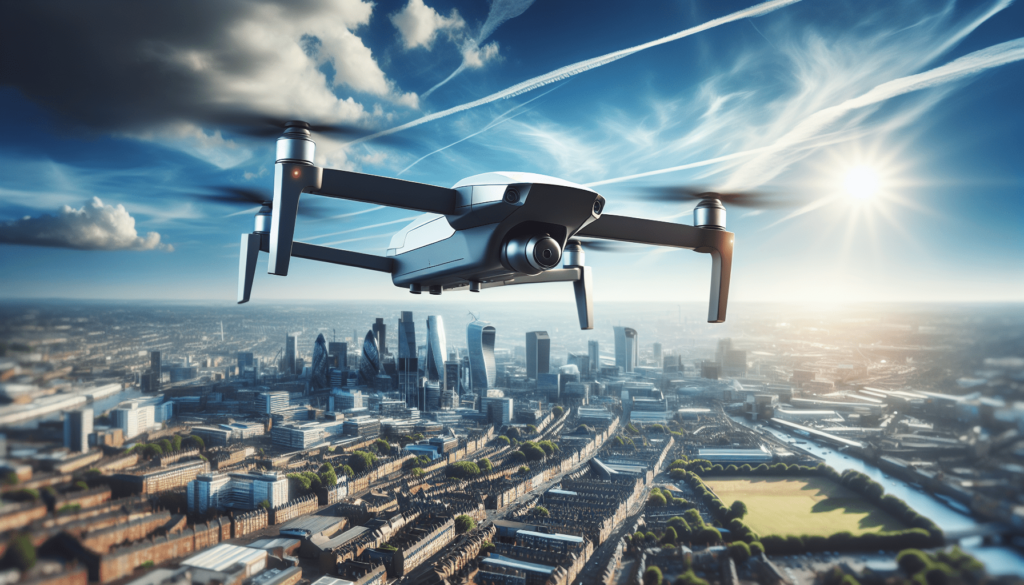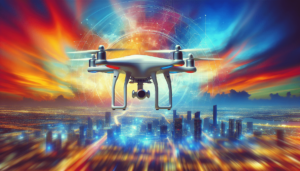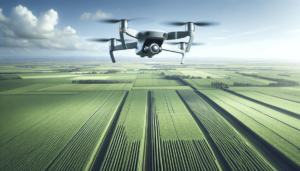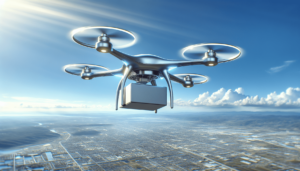Have you ever wondered how the integration of drones has transformed modern policing? The convergence of technology and law enforcement has introduced new tools, and among the most promising are drones. Unmanned Aerial Vehicles (UAVs), commonly known as drones, have revolutionized various domains, and their application in police work is no exception. The ability to quickly deploy an aerial perspective provides a tactical advantage that was once unprecedented. This transformative tool, while filled with promise, also captivates a number of challenges that law enforcement agencies must thoughtfully navigate.

The Advent of Drones in Law Enforcement
Drones were initially embraced by the military, but their reduction in cost and increase in effectiveness have led to civilian applications, including law enforcement. They offer an overhead view that allows officers to observe, assess, and manage situations like never before. By hovering silently, drones can monitor large crowds, document crime scenes, and even follow suspects in real-time without the need for a pursuit — minimizing risk to officers and the public alike.
Advantages of Police Drones
In understanding the impact of drones on law enforcement, their benefits are multifaceted. From efficiency to safety, drones provide a spectrum of advantages that have redefined police operations.
Enhanced Surveillance and Monitoring
Drones enhance the ability of law enforcement agencies to monitor large areas effortlessly. This is particularly useful during public gatherings, protests, or events where crowd control is a priority. Drones offer a bird’s-eye view, giving officers crucial information quickly.
Rapid Deployment and Operational Efficiency
One of the biggest advantages of drones is their ability to be deployed rapidly. Unlike traditional aerial support, such as helicopters, drones require less time to prepare and can be quickly dispatched from virtually any location. This efficiency is crucial in emergency situations where every second counts.
| Feature | Drones | Helicopters |
|---|---|---|
| Deployment Speed | Rapid | Moderate |
| Cost | Low | High |
| Mobility | Highly Agile | Limited in tight spaces |
Cost-Effective Solutions
The cost-effectiveness of drones makes them a viable choice for routine surveillance and operations that require aerial views. Compared to manned aircraft, drones are more economically viable, saving taxpayer money while still fulfilling critical roles in policing.
Improved Safety for Officers
Drones minimize the need for physical presence in potentially dangerous situations. By providing remote access to real-time video footage, officers can make informed decisions without putting themselves in harm’s way. This is especially crucial in scenarios involving armed suspects or hazardous environments.
Evidence Gathering and Documentation
With high-definition cameras and thermal imaging, drones provide detailed visual evidence that is invaluable for investigations. The ability to capture images from various angles allows for thorough documentation of crime scenes, aiding in case building and presentation in courtrooms.
Challenges of Deploying Drones
Despite these advantages, the use of drones in policing is not without its complications. The path to fully integrating this technology into standard operations involves overcoming a variety of hurdles.
Privacy Concerns
The most significant challenge is balancing the benefits of drones with citizens’ rights to privacy. The potential for surveillance abuse is a legitimate concern, prompting the need for clear regulations and transparency from law enforcement agencies. Policymakers and the public demand rigorous standards be in place to prevent intrusive monitoring without consent.
Regulatory and Legal Hurdles
Navigating the regulation landscape is another barrier. Drones must comply with aviation laws, which can vary significantly between regions. Law enforcement agencies must familiarize themselves with Federal Aviation Administration (FAA) regulations that govern drone operations to avoid legal pitfalls.
Technical Limitations
While drones offer many capabilities, technical limitations do exist. Battery life, weather conditions, and potential for malfunction can limit operational effectiveness. As technology continues to evolve, these challenges may be mitigated, but they remain factors that law enforcement must consider and prepare for.
Public Perception and Trust
The adoption of drones in police work requires public acceptance and trust. Historical missteps and the specter of constant surveillance contribute to skepticism. Creating an open dialogue with communities and ensuring accountability can help foster public confidence in the use of drones.
Ethical Considerations in Drone Deployment
Ethical use is paramount in integrating drone technology within police work. The implications for civil liberties are significant, and ensuring that drone usage aligns with ethical practices is essential.
Transparency and Accountability
Integral to ethical deployment is transparency. Agencies should be forthcoming about their policies regarding drones, when they’re used, and the data collected. Maintaining accountability, through oversight committees or public disclosures, helps in building trust.
Balancing Safety and Rights
While drones offer additional safety measures, agencies must always prioritize citizens’ rights. Developing clear usage protocols and ensuring officers are trained in ethical operations of drones are steps towards achieving a balanced approach.
Future Prospects
As drone technology advances, the role they will play in law enforcement is poised to expand. Future prospects include integrating artificial intelligence for advanced analytics and predictive policing.
Integration with AI and Machine Learning
The next frontier for drones in law enforcement is the combination with AI and machine learning. These technologies can analyze patterns, identify suspicious behavior, and potentially predict crimes before they occur. However, such advances must be approached with caution to avoid algorithmic bias and ensure equal justice.
Conclusion
Drones represent a pivotal development in law enforcement, offering numerous advantages alongside notable challenges. Striking a balance between harnessing their potential and respecting civil liberties will dictate their success. By building frameworks that address privacy, regulation, and ethical considerations, police agencies can effectively integrate drones into their operations. The continued evaluation and adaptation of drone policies will be crucial as the technology and its applications evolve. As with any powerful tool, the responsible use of drones will ultimately determine their lasting impact on the landscape of public safety.


